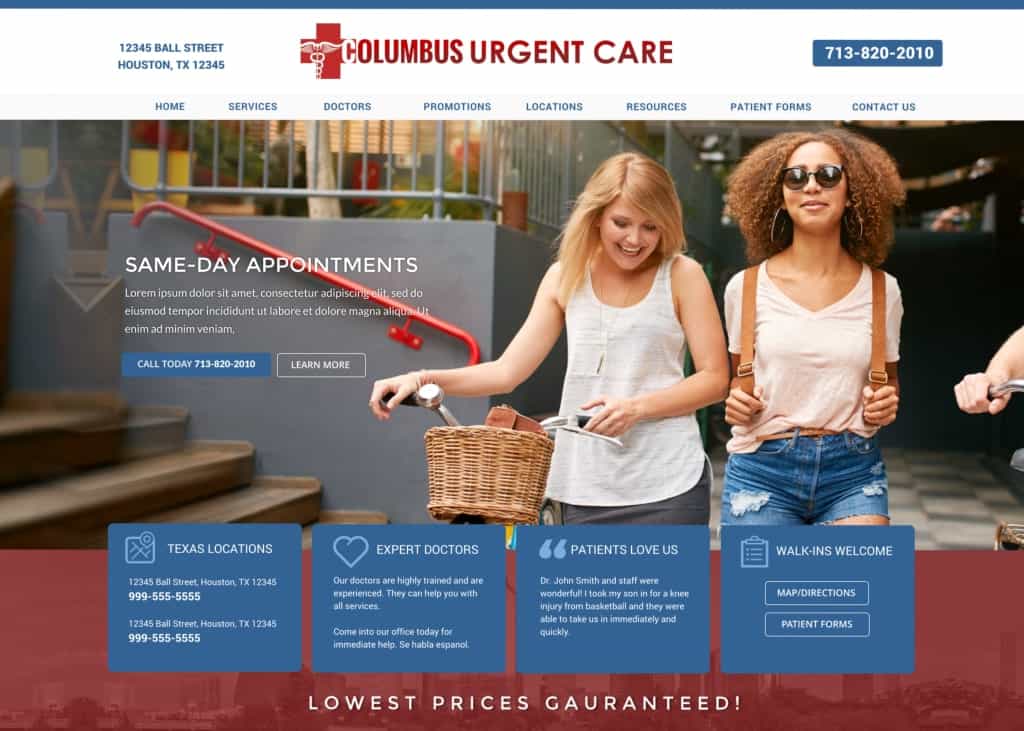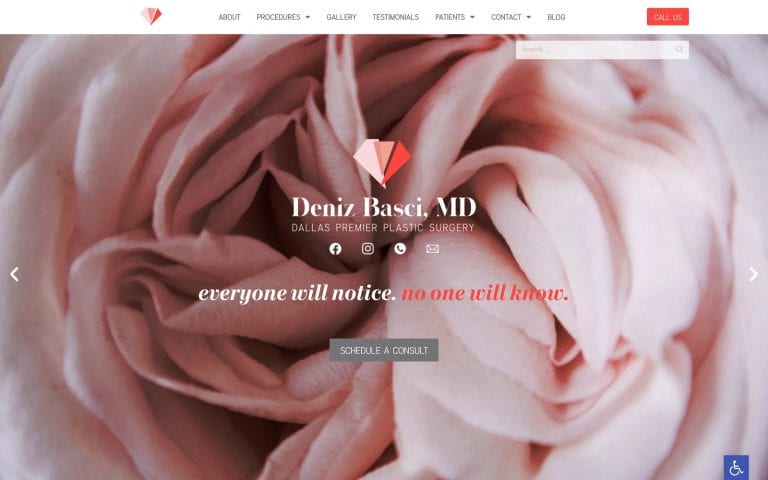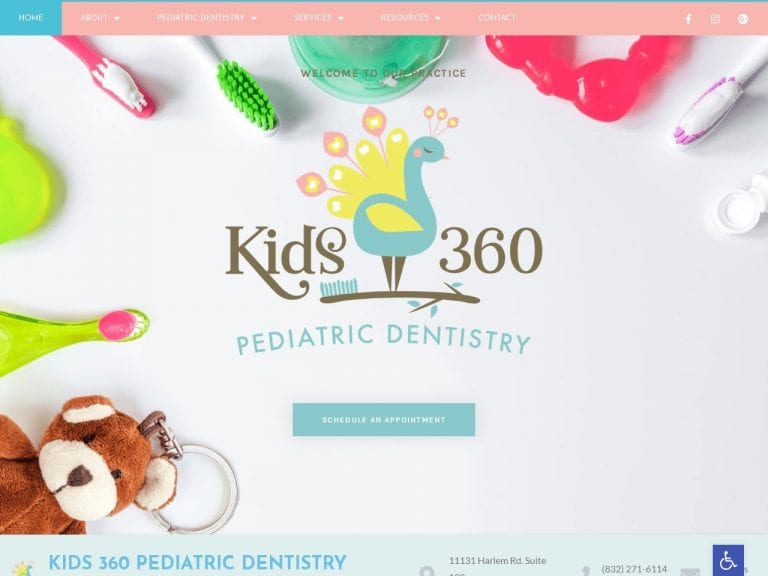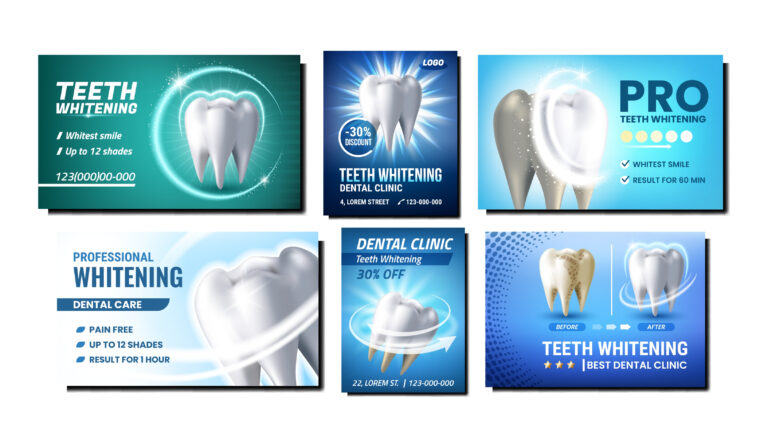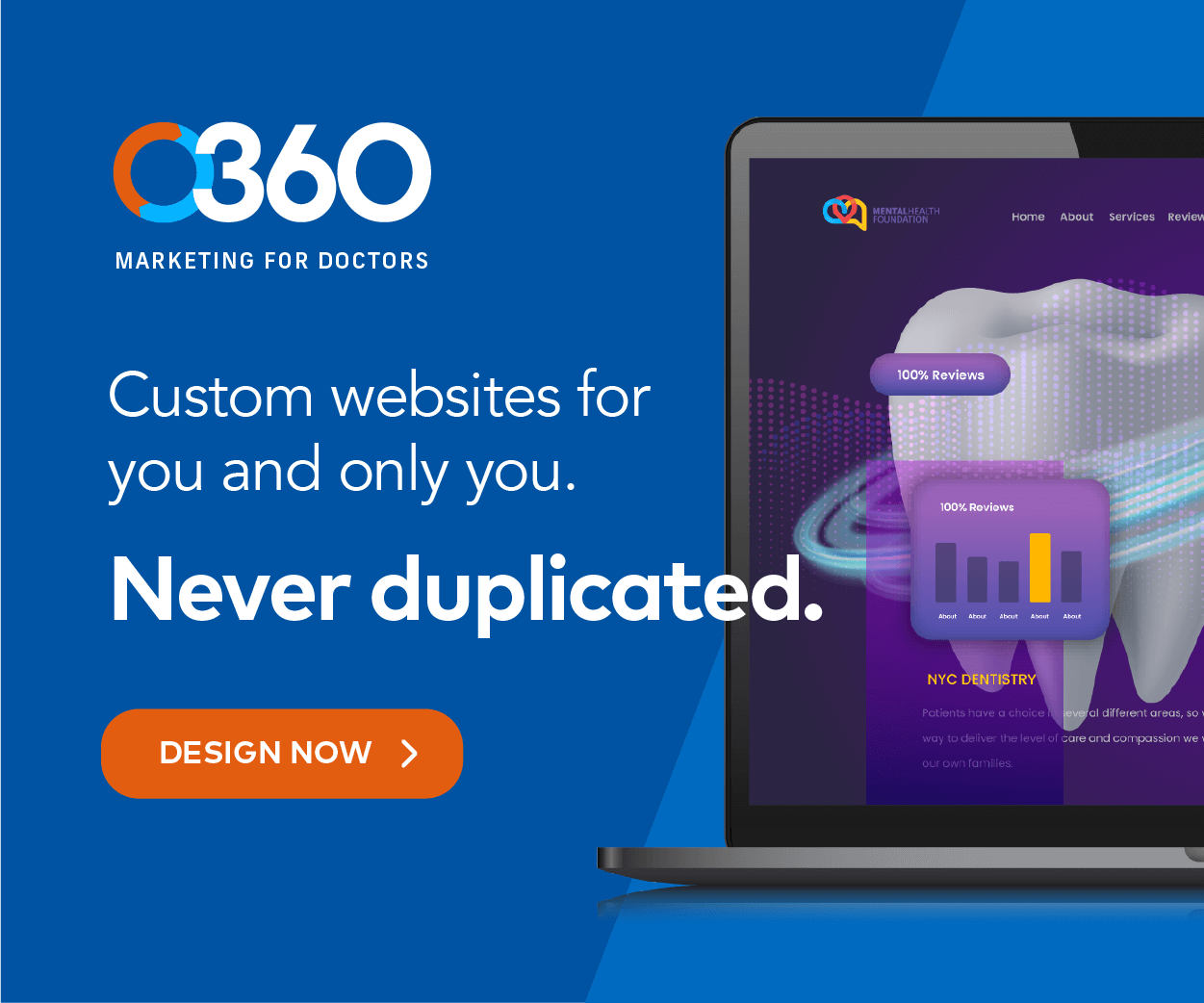This article will explore strategies and tactics to help you effectively market your urgent care practice and attract new patients. Whether you’re just starting out or looking to boost your patient base, these tips and techniques can help you reach your goals.
Urgent Care Versus ER
What is an urgent care practice, and how is it different from an ER or an emergency room in a hospital?

An urgent care practice provides immediate medical treatment for non-life-threatening injuries and illnesses. Urgent care centers are typically open for extended hours, including evenings and weekends. They are often a more convenient and cost-effective option than going to the emergency room (ER).
Comparison Table
| Type | Urgent Care | ER |
| Scope | Minor diseases or injuries | Major injuries or life-threatening incidents |
| Hours | Extended hours | 24/7 |
| Priority | Usually first come, first serve | The most severe first |
| Wait Time | 1-2 hours | 4-5 hours |
| Cost | Similar to regular visits + premium | Hospital level cost + urgency surcharges |
Marketing audience of an Urgent Care
Who should we target? The potential patients of an urgent care practice include individuals of all ages who are seeking medical treatment for urgent yet, non-life-threatening injuries or diseases. Maybe someone fell off the stairs and has a large swelling on his knees, or a child with a high fever during weekends can be a typical patient for an urgent care facility.
Knowing that all marketing efforts should focus on these goals:
- Create a memorable image, connecting you to accidents or untimely illnesses.
- Repeat the exposure as often as possible.
- Get exposure in locations where injuries are more likely. For example, gyms or parks.
- Display ads when people search for specific problems urgent care would address.
Website design for urgent cares

The first and most important step in marketing your urgent care practice is building a high-quality, custom website. We have discussed how to build a medical website in detail, but a website for an urgent care practice is different in that it needs to be optimized for patients who may be in a state of distress or urgency. Here are some best practices:
- Make it easy to find information: Patients needing urgent care may not have the time or ability to search multiple pages to find the needed information. Ensure important information, such as location, hours, and services, are prominently displayed and easy to find on every page.
- Use clear, concise language: Avoid medical jargon or technical language that may confuse patients.
- Highlight your unique value proposition: Tell people why it is better to come to you than an ER and why you may be better than other urgent care offices.
- Make it mobile-friendly: Most injuries happen outside, and phones are how patients will end up on your site. You must have a mobile-friendly website.
- Differentiate from an ER: Both for medical reasons and also financially, make sure to filter people and guide those who should go to an ER instead of you to a hospital.
- Include patient reviews: Highlight reviews that address urgent care patients. For example, wait time, expenses, and type of solutions you provide. Learn how to build a great online reputation.
Find out how O360 became the #1 Web Design Company for Urgent Care Practices.
Secrets behind Urgent Care websites.
Best methods of marketing an Urgent Care

While you have different channels to market your practice, first, let’s consider who is the target audience. To find the potential patients let’s categorize the type of incidents that results in the need to visit a doctor quickly.
- Sports injuries
- Kids leagues
- Adults weekend worriers
- Home Injuries
- Playing children
- DIY projects hopefuls
- Common illnesses like cold
- Kids getting symptoms like high fever at night
- Adults with flareup a cold
- Food-related
- Children eating wrong
- Adults and food poisoning
- Other incidents.
Any online marketing efforts must align with appearing in front of these potential patients. For example, the elderly usually are not good candidates as a target. Mostly because they don’t work, are free regularly, and take care of their medical needs promptly. They are also less involved in random physical activities like sports. Besides, if there is a physical injury to a senior citizen, often Urgent Care is not equipped to handle it. So, don’t spend money advertising for exposure to anyone over 65, for example.
Paid online ads for Urgent Care practices
Advertisement online is perhaps the most effective way of getting new patients for your urgent care office. This can include SEO (search engine optimization), social media marketing, and online ads. Here we focus on online ads.
Google Search Ads (PPC)

Pay-per-click (PPC) advertising on Google can effectively attract new patients to your urgent care practice. Here are some important tips for running a successful PPC campaign:
- Define your target audience: As we discussed, make sure your ads only appear in response to the above categories of patients.
- Choose the right keywords: Details in keyword selection can make a big difference. Ensure you are not paying for people simply searching for information. For example, don’t bid for ‘high fever’ as a keyword. Instead, bid for ‘urgent care that treats high fever’ as your search phrase.
- Create compelling ad copy: Address the patient’s concerns in the copy. First, keep it simple. After all, it is an emergency. Second, answer questions like wait time, cost, and insurance coverage in your ads to remove decision friction.
- Use ad extensions: Ad extensions will make your ad more visible and offer an opportunity to address the abovementioned concerns.
- Monitor and optimize your campaign: This applies to any marketing efforts.
- Use landing pages: Make sure your landing page follows the good design practices we discussed in the web design section above.
Check how O360 PPC Marketing Management work.
Yelp Ads

Pros and cons of running ads for urgent care on Yelp
I know, Yelp ads are expensive but, at times, necessary. For urgent care practice, Yelp ads are a necessity. Here are the pros and cons of Yelp ads:
Pros:
- Targeted audience: Yelp’s user base primarily comprises individuals looking for local businesses and services, making it a good platform for reaching potential patients.
- Ad placement: Ads on Yelp are prominently displayed on the platform, making them easy for users to see and click on.
- Review integration: Yelp allows you to highlight positive reviews in your ad, which can help build trust and credibility with potential patients.
Cons:
- Cost: Yelp ads can be expensive, especially for smaller businesses.
- Competition: There may be a lot of competition for ad space on Yelp, making it more difficult for your ad to stand out.
- Limited targeting options: Yelp’s targeting options are somewhat limited compared to other platforms, making it harder to reach specific audiences.
Bing and Yahoo Search Ads (PPC)

The principles of running PPC ads on Bing and Yahoo are pretty much the same as it is for Google, discussed above. Just remember that while Bing and Yahoo have only around 12% of the traffic Google does, the competition is lowering as many practices don’t find it worthy of running ads on these two search engines.
How to save money running online ads?
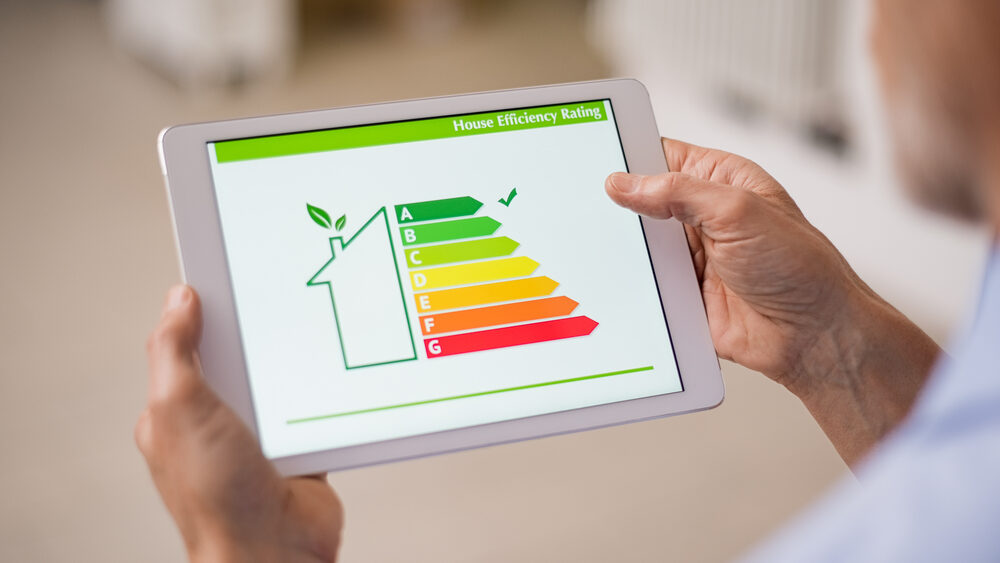
Set a budget: This will help you avoid overspending and ensure you get the most value for your ad spend.
Use targeted keywords: Paying for keywords that are not relevant to your service is the number one reason for wasting money in online marketing. Pick good keywords and use ‘negative keywords’ to filter unwanted traffic.
Optimize your landing pages: Creating well-designed and optimized pages can help increase your conversion rate and get more value out of your ad spend. Google, in effect, offers discounts for a better quality experience for users.
Use ad scheduling: Scheduling your ads to run during specific times of the day or week can help you reach your target audience when they’re most likely to be interested in your services. You don’t want to waste money running an ad for emergency services when you are not available.
Use conversion tracking: Find out what works and optimize to that effect.
Print marketing for your urgent care office

Several print ad options can be effective for marketing an urgent care practice:
- Newspaper ads
- Magazine ads
- Direct mail
- Billboards
- Print collateral
Print ads are useful for building awareness of your existence. They are not usually used when the injury happens. So, design them with that fact in mind. You want to be remembered. So you want to be loud, visible, and memorable in your ads. Our article details postcard marketing ideas for dentists with many concepts that work for any medical practice.
How much to invest in marketing your urgent care practice
It isn’t easy to provide a specific answer to this question. The amount you should invest in marketing your urgent care practice will depend on various factors, including your budget, marketing goals, and target audience. Here are a few things to consider:
- Marketing budget: As a general rule, allocating a portion of your income for marketing is a good idea, although the specific percentage will depend on your overall financial situation and business goals. Some experts recommend allocating 5-20% of your income for marketing, although this can vary based on your industry and target audience.
- Cost per patient: The cost per patient for marketing can vary significantly depending on your marketing channels and tactics. Some common marketing channels, such as paid search advertising, can have a high cost per patient, while others, such as social media marketing, maybe more cost-effective. Often $100 is an average that works in most situations.
- Return on investment: It’s important to consider your marketing efforts’ return on investment (ROI) and ensure you’re getting a good value for your ad spend. This can be difficult to quantify, but tracking metrics such as website traffic, conversions, and patient volume can help you understand the effectiveness of your marketing efforts.
Ultimately, the amount you should invest in marketing your urgent care practice will depend on your specific goals and budget. It may be helpful to work with a marketing professional or consult with industry experts to determine a marketing budget and strategy that is appropriate for your business.
Conclusion
Marketing for an urgent care practice has similarities to any healthcare marketing, but the differences are vital to understanding. Urgent care marketing should focus mainly on short-term or immediate conversion instead of usual healthcare marketing. Regular medical patients go through a totally different decision-making process. To summarize, remember that patients who need urgent care:
- Are nervous and in a rush.
- Need to talk to someone now.
- Worried about the wait time and costs
- May not understand the difference between urgent care and ER.
- Mostly use their phone to find an office.
See examples of top urgent care websites by O360.
Find the best company that offers custom web design to urgent care practices.
